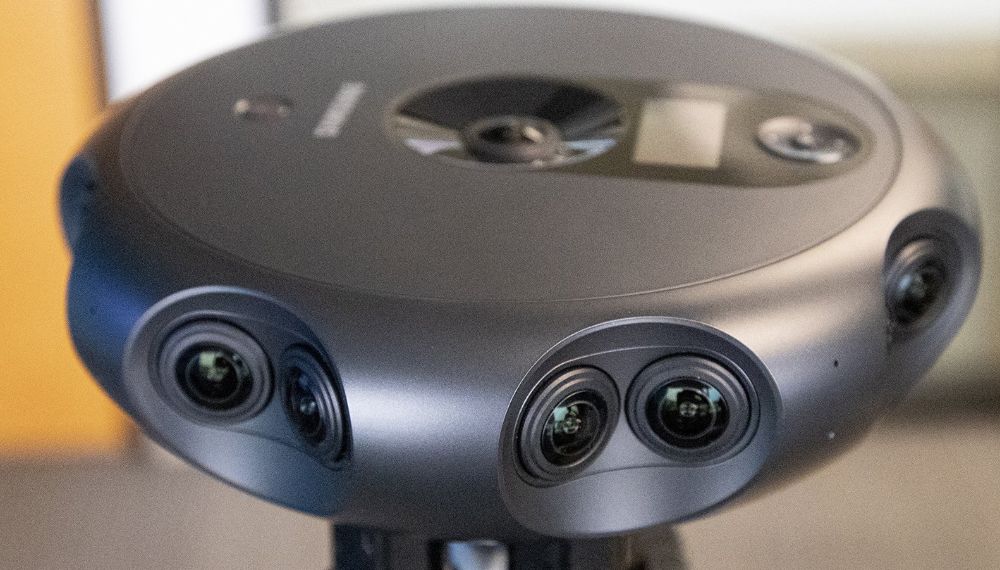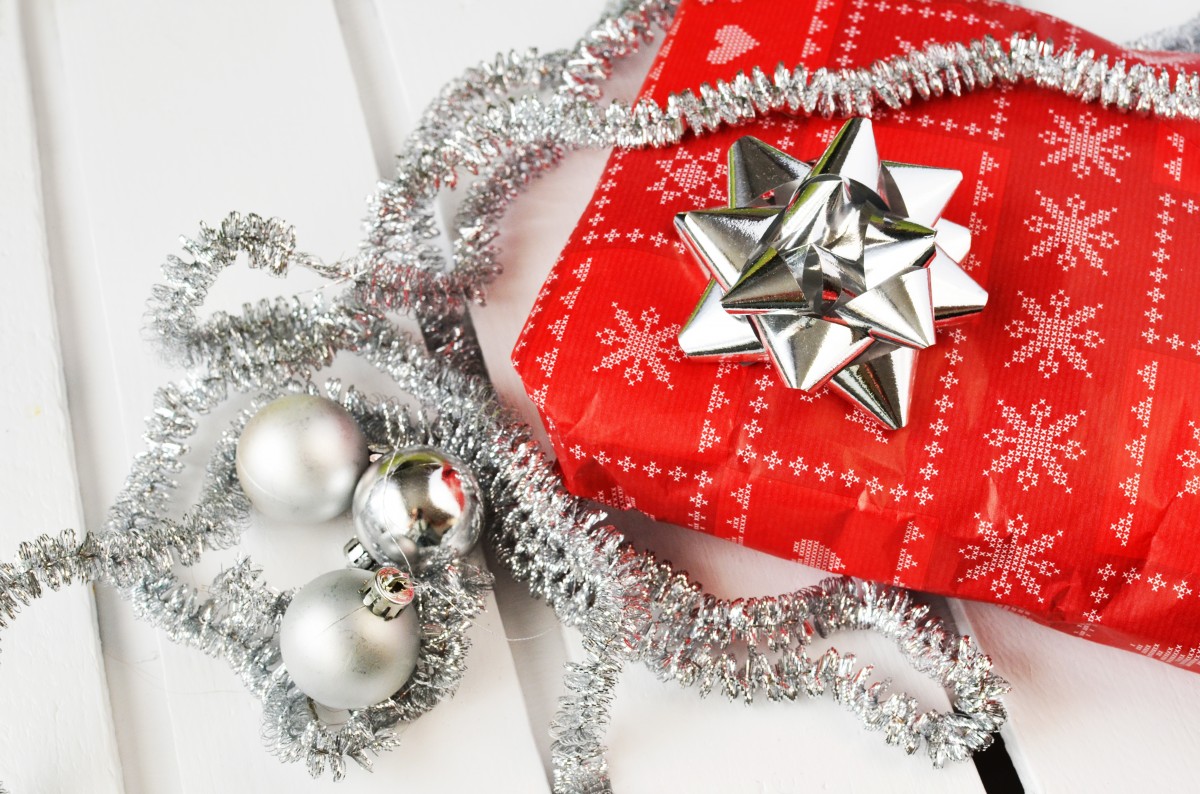Review of the best museums in Novosibirsk 2024
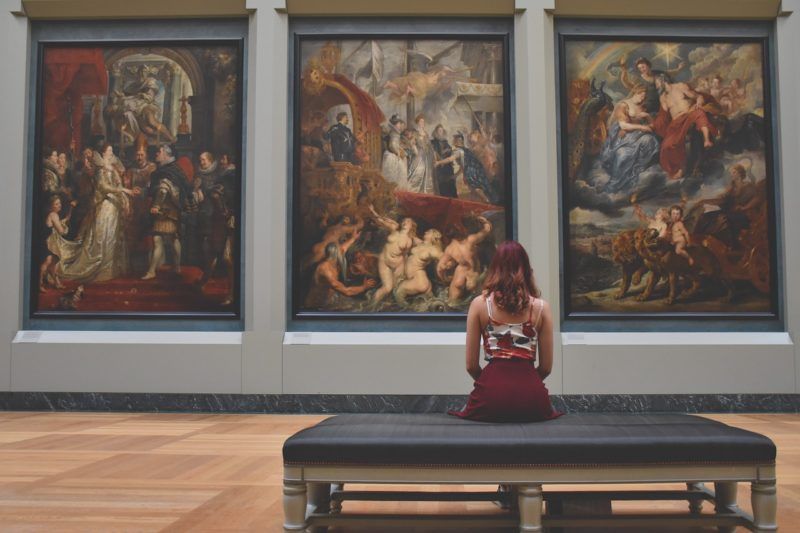
Museums are the thread that connects the past and the present. Only by plunging into the world of the past can you see and understand how life has changed around: from animals and plants that inhabit the earth, ending with the benefits of civilization.
The review presents the best museums in Novosibirsk, included in this list, based on the positive feedback from visitors.
The best museums in Novosibirsk
State Museum of Local Lore
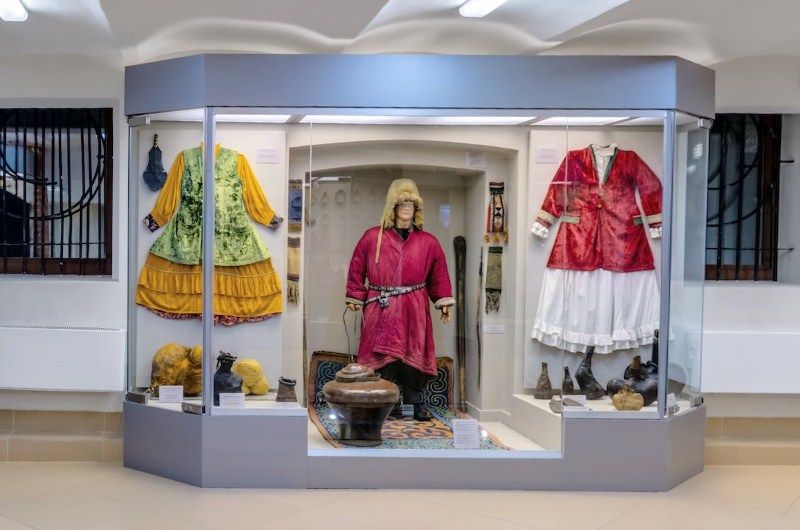
| Address | Red Avenue, 23 |
| Telephone | ☎ 383 227 15 43 |
| Working hours | Wednesday and Friday - from 10:00 to 18:00 |
| Thursday - from 12:00 to 20:00 | |
| Saturday and Sunday - from 11:00 to 19:00 | |
| Ticket price (in rubles): | |
| adults | 200 |
| pensioners students, schoolchildren | 100 |
| family (2 adults + 1 child) | 300 |
| family (2 adults + 2 children) | 400 |
| Benefits are due: | |
| children | orphans, under 6 years old, from a large family |
| adults | disabled people, participants of the Second World War, heroes of the USSR and the Russian Federation |
| Website | http://youmuseum.ru/ |
| When opened | 1920 year |
The museum is located in the city center, opposite the City Hall, in the former City Shopping Complex. The building is an architectural and historical monument.
The halls located on the ground and first floor will tell about the traditions, customs and crafts of the Siberian people, as well as the history of the Novosibirsk region.
You can follow the path of development in agriculture, handicrafts, cattle breeding, trade, as well as in military affairs by examining the exhibits displayed in the hall "Siberia in ancient times".
Hunting tools are presented to visitors: Ket bow, darts, arrows, spears, traps, traps and flint weapons; figurines of people, birds and animals, made of bronze and silver, as well as equipment for ritual ceremonies; ceramic and bronze items; equipment for a horse and different types of weapons of warriors and nomads.
In the hall "Development of Southern Siberia”, The following exhibits are presented for study: equipment of soldiers, firearms, household items, tools for work, items for travelers. There are also casual and party wear.
In Hall 3, visitors will see life of the Novosibirsk people in 1893-1926. The exposition presents a reconstructed study with a table on which there is a telephone set and a book, as well as a sewing workshop with the necessary items. Then you can explore the interior of the houses, typical for that time, and see the old motorcycle, which stands in the center of the hall. Also presented are items that were once in the first gymnasiums and military equipment since the First World War.
The life of the city during the period of industrialization and peasant revolts can be traced in the items of weapons, everyday clothes, school supplies, musical instruments and porcelain collections in Hall 4 "The first Soviet five-year plans."
Exhibits in Hall 5 will tell about the life of Novosibirsk during the Second World War... Here you can see clothes and weapons of the military, factory machines and products made on them, as well as a machine for making felt.
In the last room, visitors enter period 1950-1960. Here you meet a recreated peasant hut and apartment, with a characteristic interior and objects.
Temporary exhibitions are held on the second floor of the museum.
The State Museum of Local Lore has 5 must-visit branches:
- Museum of Nature, located on Vokzalnaya magistral street, 11.
There are 4 halls in the museum, which will acquaint visitors with the peculiarities of climate, relief and soil; flora and fauna. Also presented are rare semi-precious, precious, and semi-precious stones, rocks and mineral rocks and ores. A feature of the paleontological museum is the fully assembled skeleton of a female mammoth. - Communication Museum located on Sovetskaya street, 33.
Visitors will see more than 5,000 exhibits, including a Morse device, a switch for long-distance communications, a telephone exchange, computers, and a TV set. - MTK Suzun-Zavod. Mint", which is located in the working village of Suzun, on Lenin Street, 22 V.
This museum and tourist complex contains archaeological, ethnographic and numismatic collections. - Museum of Olympic Glory down the street Sovetskaya, 33.
The museum has about 7000 exhibits, including collections of flags, certificates, medals, cups. - Museum "City Estate Novo-Nikolaevskaya" down Lenin street, 23.
The museum is located in a residential building, and is restoring the interior of the apartment in which the bourgeois family lived.
For visitors with special needs, the Museum of Nature has a ramp and an administrator call button to open the door. The Museum of Local Lore has a button for calling the administrator, after pressing which, the museum staff will leave and carry the visitor through the stairs.
- convenient location;
- availability of benefits;
- taking care of visitors with special needs.
- not found.
Museum of Railway Engineering named after N.A. Akulinina

| Address | Razezdnaya street, 54/1 |
| Phone number | ☎7 383 248 08 22 |
| Opening hours | from Tuesday to Sunday - from 11:00 to 17:00 |
| Ticket prices (in rubles): | |
| for preschoolers | is free |
| for younger students and adolescents | 40 |
| for adults | 100 |
| for a group of up to 10 people | 350 |
| photography | 50 |
| Opening year | 2000 |
On an area of 3,000 m2, there are 182 pieces of preserved equipment. What distinguishes this museum from others is the presence of technology not only in one direction, for example, locomotives, but also other technical means that were used on the railway.
On several railway platforms, there are expositions with an exposed sign that provides information about the name, main characteristics and purpose.
Among the exhibits on display are:
- diesel locomotives (mainline diesel locomotive);
- electric trains (the first high-speed electric train made in Russia);
- steam locomotives (one of the first steam locomotives made in Russia, coal locomotives);
- electric locomotives (electric locomotives of foreign and Russian production);
- electric trains (electric train composition made in Russia);
- diesel locomotives (mainline diesel locomotive);
- carriages (luxury carriage with a bunker, oak furniture and a restaurant, for the kings; kitchen carriage; carriage for prisoners; subway carriage);
- special railway equipment (wagons for the transportation of liquid iron and alcohol, snow removal equipment, motor platforms, filling and lubrication stations).
Also, visitors will be interested in the recently appeared, but rapidly growing, exposition of Soviet and foreign retro cars. Among them are: trucks, tractors, all-terrain vehicles, cars, as well as military equipment.
The wagons on display can be viewed both outside and inside. But, this service is provided for a fee and only accompanied by a guide.
You can go into the locomotive cabin, which stands at the entrance to the museum, and look around for free. Museum rules prohibit climbing on the rest of the equipment.
- budget tickets;
- the exhibition impresses with its variety of exhibits;
- the opportunity to visit the inside of the cars.
- absent.
USSR Museum

| Where is | Maxim Gorky Street, 16 |
| Phone number | ☎ 7 383 223-87-97 |
| Schedule | from Tuesday to Saturday - from 10:00 to 18:00 |
| How much does it cost to visit: | |
| for adults | 200 rubles |
| for seniors, schoolchildren and students | 150 rubles |
| Page in "Vkontakte" | https://vk.com/museum.ussr |
| Opening year | 2009 |
The museum is located in a one-story old building with a mezzanine. This is an amazing place that can plunge into the past, during the times of the USSR. A large number of old items act as a link between the past and the present.
In the museum, you can take pictures, and any of the presented exhibits can be touched, pressed and twisted. The guide will tell the story of each item and show you how to use it correctly.
The museum often conducts excursions for schoolchildren, and foreigners are regular guests here.
At the entrance, visitors will be greeted by the flags of the USSR.
In the pioneer hall you can see the drum and horn. As well as school supplies and school uniforms in the form of a tie, shirt, sneakers, trousers and a jacket for boys; and dresses with a tie and a white apron for girls.
In the hall of law enforcement defenders on the table there is a typewriter "Progress", a telephone and an interesting table lamp. Nearby is a large safe with a poster pasted on it and a clock on top. On the wall you can see a map of the USSR.
In the military corner, you can try on officer's greatcoats, soldier's raincoats, helmets and caps, consider a sapper shovel and other military items.
The next room contains a huge variety of things. Among the still working equipment there is a washing machine, vacuum cleaner, TV, hairdryer, fan, refrigerator, music player, gramophone, camera. It is also worth highlighting a device for making soda water and an air humidifier.
Among the kitchen utensils you can see a dumpling maker, a siphon, a milk watchdog. An old sideboard contains plates, decanters, glasses and a sugar bowl.
In the room you can also see children's toys, a manicure machine, perfumes, creams, a bicycle, books, cigarette cases, metal curlers and many other items.
The basement contains computers, telephones, tape recorders, radio equipment, typewriters, vacuum cleaners, irons, electric razors, separators, filmoscopes, and photographic enlargers. There are also glass bottles in nets, a chess set, a globe, a cast-iron sled, and even an electric grinder made from a washing machine motor.
You can also familiarize yourself with a part of the Soviet wardrobe: elastic bands with buttons to support men's socks, women's stockings and a belt with buttons, to which they were attached.
On the mezzanine is a room with art objects. These are painted chairs, a table, benches, dolls and whistles. As well as plates, cups and a towel with an ornament. The room has an iron bed with a handmade carpet hanging on the wall.
The room has a small room with birch bark toys and nesting dolls.
Under the mezzanine there is a guest room, in which members of the Old Records club gather and watch Soviet films. Thematic meetings with museum guests are also held here.
After inspection, visitors can buy a souvenir in the form of a cup, keychain, calendar, notebook or magnet with the USSR logo.
- the museum is of equal interest to both children and adults;
- inexpensive tickets;
- a large collection of Soviet items;
- permitted photography;
- the opportunity to touch each exhibit.
- lack of space to accommodate such a large collection.
Historical park "Russia is my history"
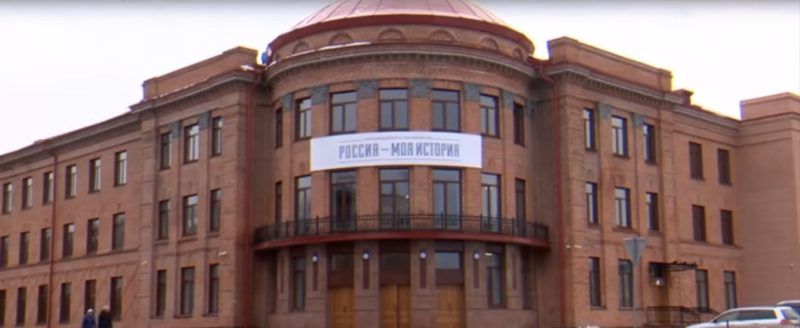
| Location | Vasyl Staroshchuk street, 24 |
| Telephone | ☎ 7 383 349 39 29 |
| Schedule | from Wednesday to Friday - from 10:00 to 18:00 |
| Saturday Sunday - from 11:00 to 19:00 | |
| Official site | https://myhistorypark.ru/ |
| Visit cost | from January 1, 2018 free |
| Year of foundation | 2017 |
Historical parks are a network of museums located in 19 cities of Russia.
An unconventional approach to presenting the historical past was chosen by the creators of the park-museum “Russia is my history”.
All information is presented electronically, using tablets, projectors, collages, lightboxes, touch tables and screens, as well as cinemas.
Digital reconstructions, animations, video infographics and 3D modeling create visual effects for multimedia expositions.
In the first hall, a multimedia exhibition is dedicated to the era of the Rurik dynasty (862 - 1598). A living book of A3 format, with moving pictures and letters appearing from nowhere, as well as projections and holograms, will tell about ancient cities, the baptism of Russia, dependence on the Mongol Empire, and the struggle against invaders. Also, little-known information about the period of the Mongol invasion is provided, the secrets and history of ancient battles and trade routes are revealed.
The created battle, using installation and video mapping, will provide an opportunity to see with your own eyes what happened during the battle.
The exhibition in the second hall is dedicated to the reign of the seven Romanovs (1613 - 1917). The large-format screen provides information about the development of the Far East and Siberia, the victory over Napoleon, the abolition of serfdom, as well as the development of culture, science and technology.
On the floor, you can see the fire created using 2D and 3D installations, which is difficult to distinguish from the real one.
In the third hall there is an exhibition "From the Great Shocks in the Great Victory (1917 - 1945)"
The exhibition will highlight the events of 2 world wars, 3 revolutions. He will talk about repression and social experiments, as well as the development of science, education and industry.
The information lends itself to the use of a multimedia installation, 100 meters long, a contactless control system, 3D and a multimedia book.
In the 4th hall there is an exhibition "Russia - my history (1945 - 2016)". Using dynamic and static video mapping, interactive tables and gesture control, information is provided about the times of the USSR and its collapse, as well as the development of the country in subsequent years.
- modern and unusual way of presenting information;
- free entry.
- not found.
Novosibirsk State Art Museum

| Location: | |
| permanent exhibition | red avenue, 5 |
| showrooms | Sverdlova street, 10 |
| Schedule: | |
| permanent exhibition | from Tuesday to Friday - from 10:00 to 18:00 |
| Saturday, Sunday - from 12:00 to 20:00 | |
| showrooms | Tuesday, Wednesday, Friday to Sunday - from 12:00 to 20:00 |
| Thursday - from 12:00 to 21:00 | |
| Phone numbers | ☎ 7 383 223 53 31 |
| ☎ 7 383 222 22 67 | |
| Official site | https://www.nsartmuseum.ru/ |
| Year of foundation | 1957 |
| Ticket price (in rubles) | |
| permanent exhibition: | |
| adult | 150 |
| students, schoolchildren | 75 |
| children under 7 years old | 30 |
| exhibition projects: | |
| adult | 50 |
| students, retirees | 25 |
| children under 18 | 10 |
| showrooms: | |
| adult | 300 |
| students and retirees | 150 |
| children under 18 | 75 |
In 1957, by order of the Council of Ministers, an art gallery was approved, which in 2004 was transformed into a museum.
The museum is located in a building that is an architectural monument - the former Sibrevkom.
The museum collection was created from the transferred exhibits:
- Pavlovsk Palace Museum donated 22 works.
- Perm Picture Gallery - 16.
- State Russian Museum - 13.
- Some of the works donated by the State Hermitage, the Tretyakov Gallery and the Pushkin Museum named after A.S. Pushkin.
- As well as works donated by private individuals.
At the moment, the museum has more than 11,000 expositions, among which are sculptures, works of Western and Russian painting, arts and crafts and graphics.
The main part of the museum's collection is made up of ancient Russian art - icons. There are more than 500 of them. Collections of icons were purchased from private individuals or were received from the Ministry of Culture of the Russian Federation.
Among the collection it is worth highlighting:
- The Miracle of Demetrius of Thessaloniki and the Last Judgment are early monuments of icon painting dating back to the first half of the 16th century.
- Icon "Mother of God enthroned" - the second half of the 16th century.
- Icon of Metropolitan Philip "Xia icon of Elder Philip Kolychev of the Solovetsky Monastery."
- A whole list of icons "Stroganov letters".
- Icons of the 17th-18th centuries, hagiographic and festive rites.
- And also a collection of icons of Siberia and the Urals.
The collection of foreign decorative and applied art, engraving and painting from different countries of the world includes works by masters of the 16th-19th centuries, from Italy, Holland, France and Germany.
It is worth highlighting such works as "Madonna", "Rialto Bridge near the Palazzo dei Camerlanga", "Dance around the Golden Calf", "Roman Temple and Bernini's Colonnade" and "Walking in the Street".
The highlight of the collection is a unique well-known exhibit of the XX century - "Self-portrait", painted by graphic artist Horst Janssen.
Russian art of the 18th-19th centuries is represented by paintings by D.G. Levitsky, V.L. Borovikovsky, A.B. Kurakina, V. Ya. Rodcheva, V.A. Tropinin and other authors.
Among the expositions of Russian art of the early 20th century are:
- "Versailles", "Gypsy" - A. Ya, Golovina.
- “On the Terrace in Kharkov” - ZE Serebryakova.
- "World of Arts" - N.K. Roerich.
Among the works of Russian art of the late XX - early XXI centuries, and the art of the Soviet period, the following are worth highlighting:
- "Kolkhoz Woman on Lake Ilmen", "Portrait of a Wife", "1943", written by K.S. Petrov-Vodkin.
- “Portrait of the artist A.O. Stepanova "," Still life with a golden bowl and a green glass "," Lilac and a stretcher "- P.P. Konchalovsky.
- "Portrait of Naryshkina", "Path in the Forest" - R.R. Falk.
- "Flowers" - A.V. Lentulova.
- "Most", "Zagorsk Kremlin" - A.A. Osmerkin.
- "Winter. View from the window "," Altai. In the mountains ”,“ Altai. Tributary of the Charysh River "- A.D. Wood.
Post-war paintings:
- "Portrait of Marshal of the Armored Forces PS Rybalko" - PD Korin.
- "Girl with wildflowers" - S.А. Chuikov.
- "Golden Maple", "In the Sortavala Forest" - N.М. Romandine.
In addition to the permanent exhibitions, the museum hosts temporary exhibitions, competitions, lectures, conferences and seminars.
- a large number of exhibits from different time periods;
- holding temporary exhibitions, seminars, conferences, lectures.
- not.
Funeral Culture Museum

| Address | Voentorgovskaya street, 4 |
| Opening hours | from 11:00 to 19:00 |
| Phones for inquiries | ☎ 8 913 712 37 09 |
| ☎ 7 383 363 03 29 | |
| Ticket prices (in rubles) | |
| tickets to 1 hall: | |
| adult | 400 |
| for children under 14 years old, pensioners and students | 250 |
| tickets to hall 2: | |
| adult | 450 |
| for children under 14 years old, pensioners and students | 300 |
| adult ticket to 1 and 2 halls, with / without excursion | 1000/800 |
| reduced ticket to halls 1 and 2, with / without excursion | 700/500 |
| Official site | https://musei-smerti.ru/ |
| Foundation date | 2012 |
The only museum of death not only in the city, but also in the country, included in the UNESCO list.
On the one hand, the shocking, but on the other, the intriguing concept of the museum reveals the other side of death - the beauty and elegance of burial culture.
The museum houses over 30,000 exhibits of the 19th - early 20th centuries.
The tour begins with a small room, the walls of which are hung with the faces of saints, and sculptures, tombstones, crosses, sleighs for transporting the deceased, slippers and other items are placed on the floor. The guide will tell you in detail about the funeral traditions and the use of all the items on display.
The large hall is divided into many thematic exhibitions.
The first exposition presents the English funeral traditions of the 19th-20th centuries. The exposition presents a funeral ceremony with female mannequins dressed in mourning dress who say goodbye to the deceased.
The second exhibition tells about embalming. Here you can see a dummy of a doctor sitting over the body of the deceased. There are also many tools, jars, a jug for ablution and 2 real skulls.
The third exhibition presents the funeral home.
The fourth exposition is an atelier for sewing funeral dress. Here are the machine, iron and other necessary parts.
The next exposition is "Postmorter". Since the 19th century, this unusual genre of photography - photography with the departed - has become very popular. The deceased was placed among loved ones, in a sitting or even standing position. After that, the artists worked on the photograph, giving the deceased the appearance of a living person.
The exposition presents a photo studio with examples of such photographs and mannequins.
Further you can see:
- expositions dedicated to the rite of cremation;
- originals and reproductions of engravings;
- a collection of both real vehicles for the transportation of the deceased, and miniature models;
- a large collection of funeral dresses, hats, handbags and other items of women's wardrobe;
- a collection of mourning jewelry;
- installation of a funeral procession;
- items of the mourning tradition of different religions.
- a large collection of exhibits;
- constant replenishment of knowledge about the funerary culture of different peoples;
- highly skilled workers who will give a detailed description of each exhibit and its use;
- the museum is included in the UNESCO list;
- participation of the museum in the action "Museum Night".
- unusual format of the museum, which is not suitable for impressionable people.
Conclusion
There are many worthy museums of various subjects in Novosibirsk, which must be visited.
The review presented the most visited museums, which made a special impression on city residents and tourists.
new entries
Categories
Useful
Popular articles
-

Top rating of the best and inexpensive scooters up to 50 cubic meters in 2024
Views: 97661 -

Rating of the best materials for noise insulation for an apartment in 2024
Views: 95022 -

Rating of cheap analogues of expensive medicines for flu and colds for 2024
Views: 91751 -

The best men's running shoes in 2024
Views: 87680 -

Top ranking of the best smartwatches 2024 - price-quality
Views: 85091 -

Best Complex Vitamins in 2024
Views: 84801 -

The best dye for gray hair - 2024 top ranking
Views: 82406 -

Rating of the best wood paints for interior use in 2024
Views: 77202 -

Ranking of the best action cameras from China in 2024
Views: 75269 -

Rating of the best spinning reels in 2024
Views: 74827 -

The most effective calcium supplements for adults and children in 2024
Views: 72462 -

Top rating of the best means for male potency in 2024 with a description
Views: 68296


